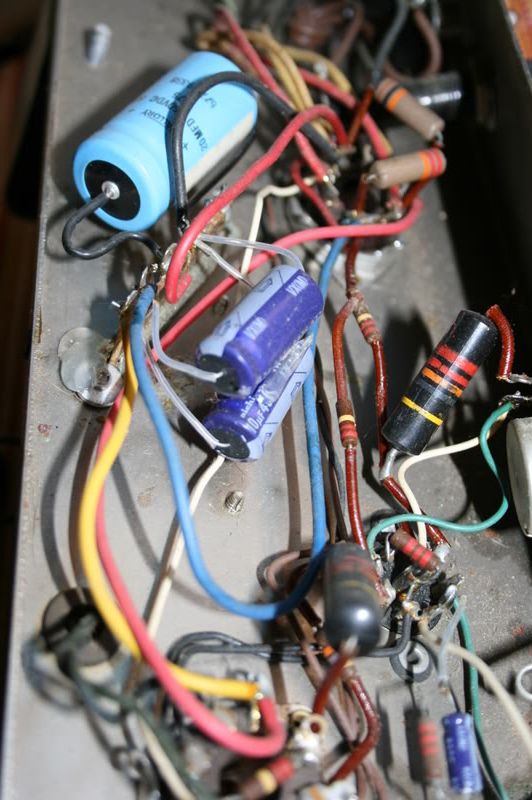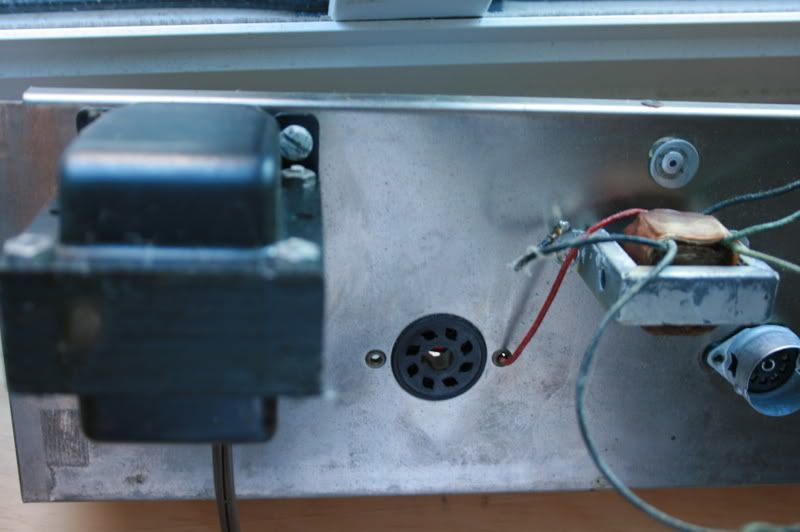I have a 1957 GA-5 I recently aquired. Of course I been experimenting with tubes and such for it and last night it started sounding a little funny and then wham - it just died. I smelled the scent of burnt components, although no actual smoke or anything.
To make a long story short I replaced all the tubes and the the amp still blows the fuses a second or two after power up. I opened it up & It looks like the amp had a cap job at some point because I saw those shiny blue & white electrolytics in there(actually they were pretty old looking too, but not "vintage"), but noticed the big 'ol 20uf cap said "mallory" on it - that can't be good. Nothing looks "burnt up" though - I think the smell was from those old transformers heating up more than usual.
Can anyone tell what the next troubleshooting step is? I've got a decent multimeter & soldering iron to work with. If it's the tranny I'll bite the bullet and go to a tech, but if it's not, this amp is so so simple, I might try this one myself. But I'd like to determine that part first before making a decision!
Thanks,
Rick
Here are some pics:


To make a long story short I replaced all the tubes and the the amp still blows the fuses a second or two after power up. I opened it up & It looks like the amp had a cap job at some point because I saw those shiny blue & white electrolytics in there(actually they were pretty old looking too, but not "vintage"), but noticed the big 'ol 20uf cap said "mallory" on it - that can't be good. Nothing looks "burnt up" though - I think the smell was from those old transformers heating up more than usual.
Can anyone tell what the next troubleshooting step is? I've got a decent multimeter & soldering iron to work with. If it's the tranny I'll bite the bullet and go to a tech, but if it's not, this amp is so so simple, I might try this one myself. But I'd like to determine that part first before making a decision!
Thanks,
Rick
Here are some pics:



Comment